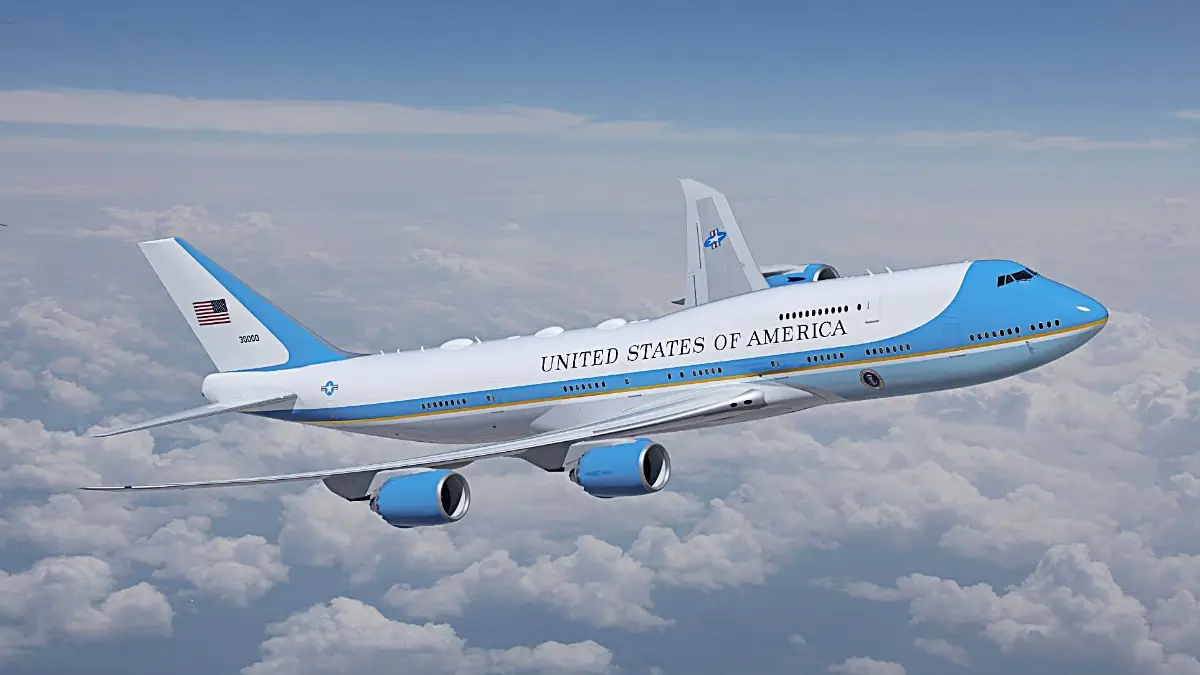
Qatar's plane to Trump: a gift that turns into a bloodbath
Converting the B-747/8 VIP into Air Force One could cost tens or hundreds of millions of dollars

The necessary changes, including security checks and technological installations, are expected to be long, expensive and complex, raising doubts about the real convenience of the "gift"
The Boeing 747-8i VIP donated by the government of Qatar to President Donald Trump (see AVIONEWS), a luxury aircraft with sumptuous interiors and exclusive amenities, is proving to be anything but a free gift. The plane, a top Boeing model with great flight autonomy and large cargo capacity, has been configured for high-end private use by the Swiss company Amac Aerospace. Photos of the interior reveal a master bedroom and a guest bedroom, two full bathrooms and nine toilets, several meeting rooms, a private office and leather armchairs on both floors. Trump himself, during a visit to Palm Beach Airport on February 15, had expressed admiration for the aircraft's ultra-luxury features.
However, the transformation of this aviation jewel into Air Force One, the presidential plane par excellence, as intended by the American president, fed up with Boeing delays in delivering replacements for the current presidential planes (see AVIONEWS), promises to be a costly and complex undertaking. "All for tens if not hundreds of millions of dollars", says former Air Force acquisition chief Andrew Hunter, explaining that "just checking the entire plane for software modifications or hidden foreign technology will cost tens of millions of dollars. This gift could become a very expensive asset to manage. You might also ask why Qatar doesn't want this plane anymore and the answer could be that it's too expensive to maintain". "This is not really a gift, in fact you have to disassemble the plane and reassemble it to meet all the communications, survival and security needs of Air Force One. This is a huge and unfunded undertaking", echoes Joe Courtney, a Democrat on the House Armed Services Committee.
The modifications needed to transform the Boeing 747-8i into Air Force One include installing advanced communications systems, missile defense, self-defense systems, and other cutting-edge safety technologies. The timeline for the transformation is uncertain, but if it were to take longer than Boeing’s planned delivery of new Air Force Ones in 2027, the operation could prove uneconomical. In addition, the maintenance costs of a luxury aircraft like the 747-8i, even without the modifications for Air Force One, would be prohibitive for private use.
The story raises questions about the real convenience of Qatar's gift and the financial implications for American taxpayers. A super-luxury aircraft, designed for private use, risks becoming a drain on the USAF budget, essentially funded by American taxpayers.
And just to clarify, Air Force One is not a single aircraft, but rather the call sign of any aircraft in the United States Air Force (USAF) that carries the US President. The current presidential fleet consists primarily of two specially modified Boeing -747/200Bs, designated VC-25A. The costs associated with Air Force One are paid by the US federal government, and ultimately, taxpayers. These costs include:
- Aircraft procurement: The initial cost of purchasing and customizing presidential aircraft is significant. For example, the new B-747-8i (designated VC-25B), will have a total cost of billions of dollars.
- Modifications and customizations: Transforming a commercial aircraft into Air Force One requires extensive modifications for safety, communications, medical and operational capabilities. These modifications are extremely expensive and complex.
- Maintenance: keeping complex aircraft such as Air Force One in perfect working order requires continuous, constant and specialized maintenance, with high costs for spare parts, checks and technical personnel.
- Flight operations: Operating costs include fuel, crew (pilots, flight engineers, support personnel), navigation, airport taxes and other charges associated with each flight.
- Logistics Support: An extensive ground support infrastructure is required for the maintenance, safety and logistics of Air Force One.
AVIONEWS - World Aeronautical Press Agency